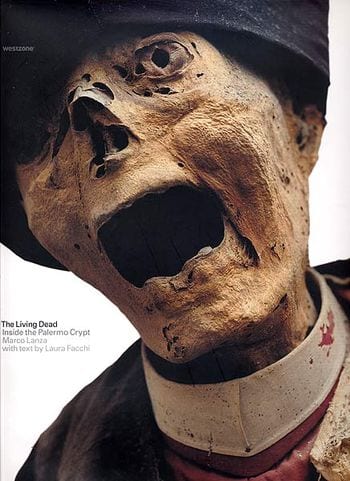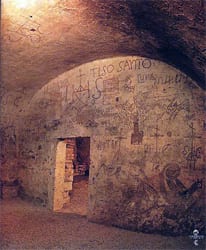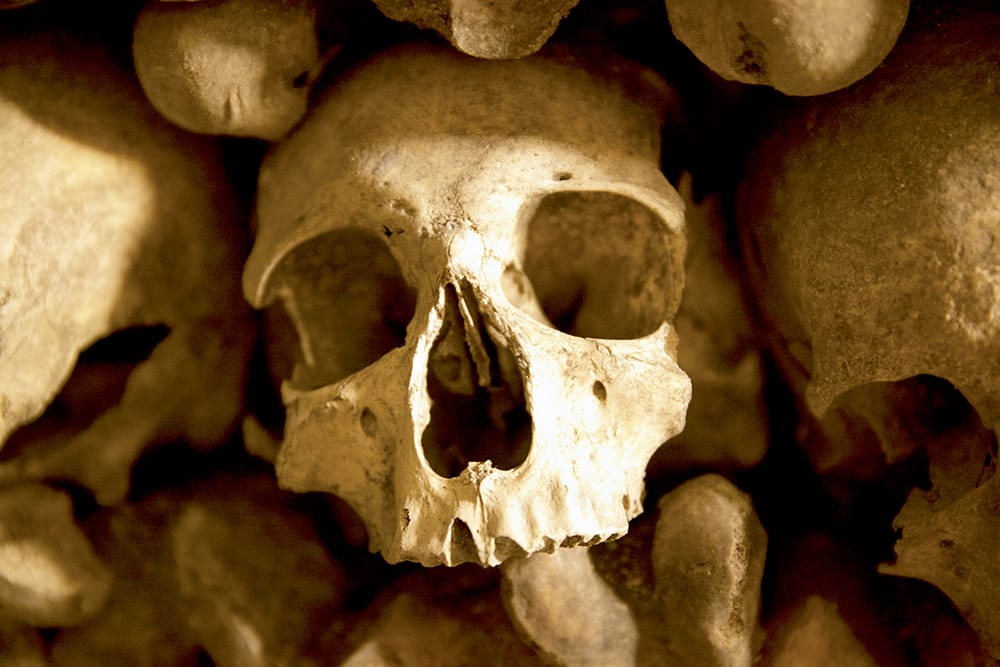
7 Haunted Places in Italy: Crypts, Catacombs, Cemeteries & More
September 17, 2025
Crypts, catacombs, torture chambers, and other creepy sights… Turns out, there’s way more to Italy than pretty art and delicious food. Here’s our list of some of the creepiest, most haunted places in Italy. Warning: Don’t read on unless you’re prepared to be truly spooked.
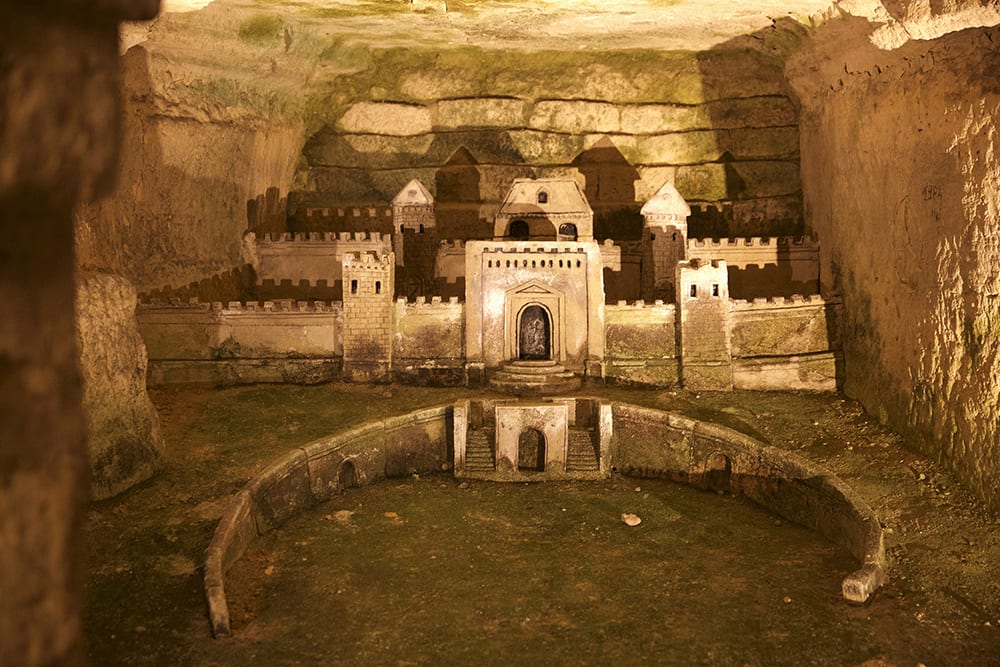
From crypts to cemeteries, there are truly some bone-chilling sights in Italy!
Table of Contents
ToggleCatacombs in Italy
The Christian Catacombs of Rome
In the first century, Italy’s Christians could either bury their dead in pagan cemeteries or illegally bury them in underground cemeteries on Christian-owned land. This is how the Catacombs of St. Callixtus along the Appian Way were formed, with a bit of money and help from the burgeoning Catholic Church. Now, the catacombs of St. Callixtus are one of the largest and most important catacomb complexes in Rome.
Named after the deacon Callixtus, the catacombs house more popes than any other – up to 16! – as well as martyrs and hundreds of Christians. A half hour tour will lead you deep under the earth. This tour is not for the easily claustrophobic though: the tombs of Rome’s ancient Christians line the narrow corridors and stretch for miles!
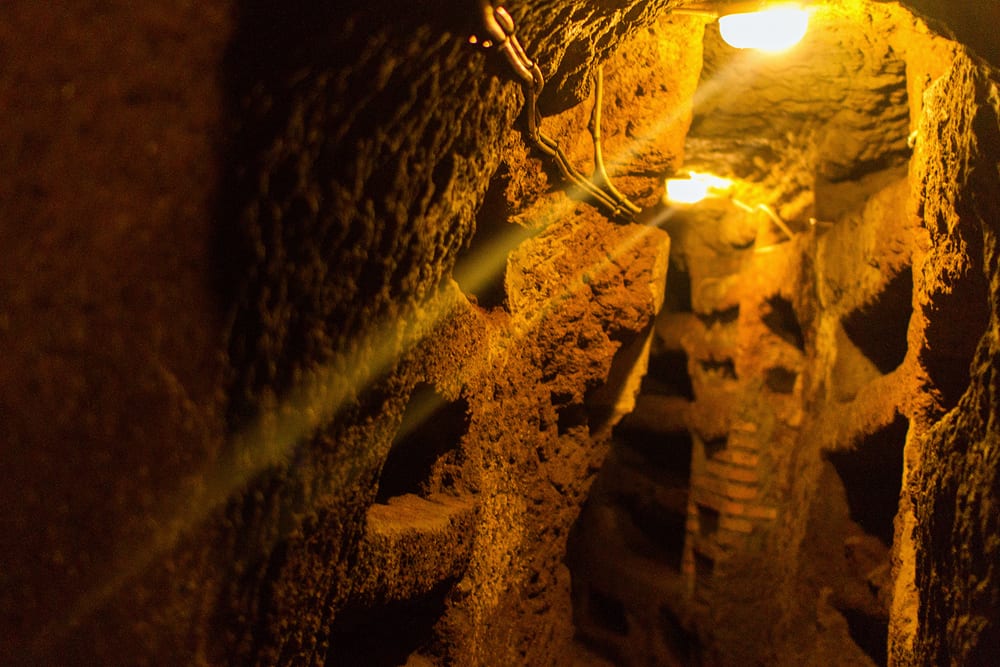
The passageway of a Roman Catacomb.
Naples’ San Gaudioso Catacombs
There are plenty of underground sights in Naples, that make the list of haunted places in Italy, including the San Gaudioso Catacombs. Although they go back to ancient Roman times, the catacombs didn’t get really creepy until the 17th century, when they were taken over by particularly macabre monks. Corpses would be sat into a carved-out niche with a hole, letting their body fluids drain out. Once a corpse had decomposed, it would be decapitated and the skull—along with, sometimes, other bones, like vertebrae—cemented to a wall to decorate a fresco of the corpse.
The frescoes, and skulls, are still there. And since this is one of Naples’ least-visited catacombs, there’s nothing like walking through the dripping, dark, and bone-decorated gloom… alone with your guide.
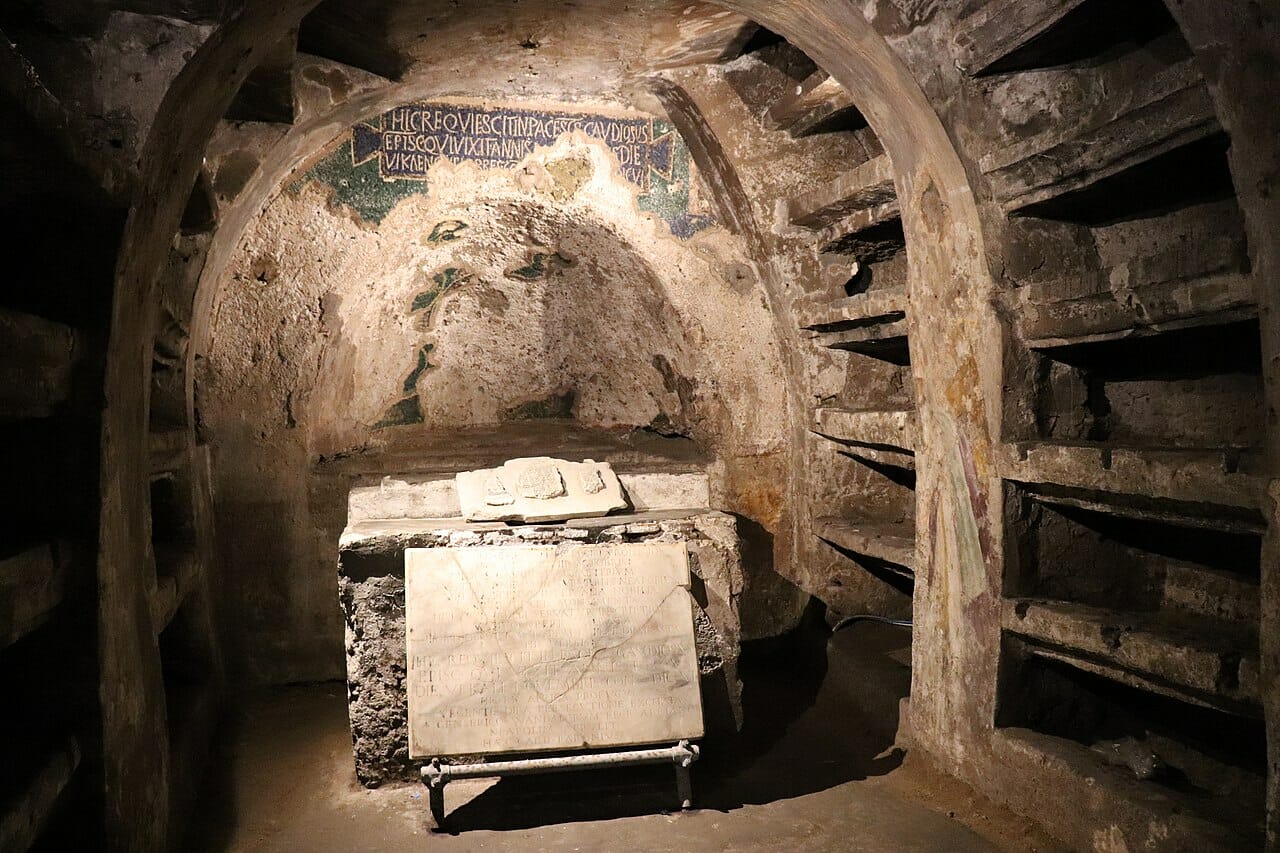
The Catacombs of San Gaudioso include both early Christian iconography – such as fish, the lamb, and grapes with branches – as well as 17th century elements. Photo credit: Fabien Bièvre-Perrin
Crypts in Italy
Rome’s Capuchin Crypt
This small crypt– frequently referred to as the “bone chapel” – is decorated with the bones of nearly 4,000 skeletons, likely those of Capuchin friars. The bones cover the walls floor to ceiling, nailed there in patterns and designs. Some serve as a frame to a sort of altar, while others hang from the ceiling as light fixtures.
The area has several tiny chapels making up different crypts, four of which are named after various bones in the human body (how’d you like to tour the Crypt of the Skull or Crypt of the Pelvises?). End your tour with the Crypt of the Three Skeletons, which dramatically – and a bit creepily – represent life, death and the Final Judgement of humans upon their death. A sign in five languages states it best: “What you are now we used to be; what we are now you will be…”

You can see some of the most haunted places in Italy while in Rome.
Palermo’s Capuchin Crypt (Catacombe dei Cappuccini)
The Capuchin Crypt in Rome has nothing on its Sicilian cousin, the Catacombe dei Cappuccini. In Palermo, the Capuchin monks mummified more than 8,000 corpses with the utmost care. They drained the bodies, washed them with vinegar, stuffed them with straw, and then dressed them in their clothes and placed them in the catacomb’s corridors. Today’s visitors find the mummies sitting, standing, or reenacting scenes from life, like rocking in a chair or “chatting” to another corpse.
The result? Today, the bodies of everyone from babies to cardinals line every wall of the caverns. They’re in all states of decay. One little girl is so well-preserved, she looks as if she’s sleeping—even though she was interred in 1920. It’s hardly surprising that, when one of our co-founders visited Palermo’s Capuchin crypt, he felt so freaked out he had to leave! Think you can handle it?
Other haunted places in Italy
Inquisition torture chambers in Narni
In almost all respects, Narni seems lovely and peaceful, a medieval hilltop town overlooking the rolling hills of Umbria. That’s until you enter Santa Maria Maggiore. Hidden underneath this 14th-century Dominican church lie a series of underground rooms… that once served as cells for the trials, tortures and imprisonments of the Inquisition.
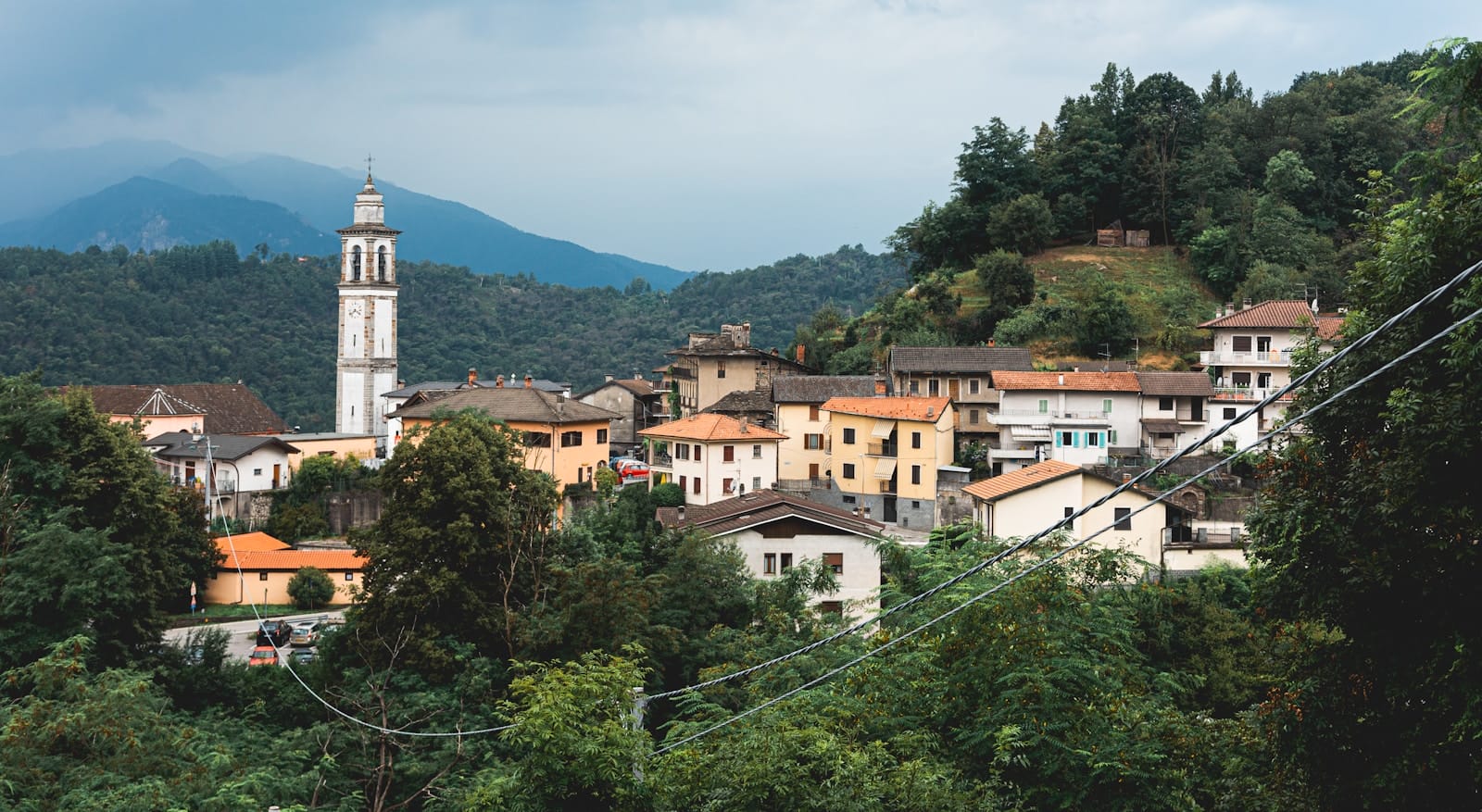
Used from 1650 all the way until 1860 (!), the cells were forgotten for years afterwards. Then 20-year-old Roberto Nini discovered them by accident in 1979, when he checked out a crack in a neighbor’s house… and wound up in a lost medieval chapel underneath the present-day church. Next door? The inquisition chambers. To piece it all together, Nini embarked on a Dan Brown-like expedition that took him to the Vatican’s librahe former Holy Inquisition Office, and the secret archives of the former Holy Inquisition Office.
Today, you can go below ground to see the torture chamber, with racks and other instruments that would have been used on display. The most heart-wrenching, though, is the “Room of Torments,” a tiny cell completely covered in symbols, prayers and codes. Most were done in 1759 by one of the guardians of Spoleto’s Inquisition jails, a Freemason who had been accused of freeing a prisoner.
If that’s not spooky enough, in December 2005, an earthquake broke open the floor of the church. Beneath it? The skeletons of men, women, and children.
You can visit the Narni Underground year-round on scheduled tours.
Venice’s Poveglia Island
Lots of myths surround Poveglia, an abandoned island in the Venetian lagoon. What we know: In the 15th century, Poveglia became Venice’s quarantine island. Anyone with symptoms of disease—particulary the devastating Black Plague—had to bide their time here. The island also would have served as a graveyard for the unluckiest of the quarantined; at the island of Lazzaretto Nuovo, also used for quarantine, mass graves with thousands of plague victims’ skeletons have been found. At Poveglia, they’re still undiscovered and unmarked.
Making Poveglia even creepier than Lazzaretto Nuovo, though, is that a mental institution was built here in 1922. Psychiatric medicine wasn’t exactly forgiving 100 years ago. As the barred windows that still remain on the island illustrate, those held here have felt like they were prisoners as much as patients. Today, the island, and its buildings, have been completely abandoned. And tourists aren’t supposed to set foot on it.
That’s creepy enough for us. But the legends are even worse; it’s said that one of the doctors at the mental asylum tortured patients in the lone belltower and was strangled to death by a “ghostly mist.”
Although Poveglia Island is technically off-limits (unless you can find a particularly daring water taxi driver), you can visit Lazzaretto Nuovo, another main quarantine island, which has just been opened to visitors.
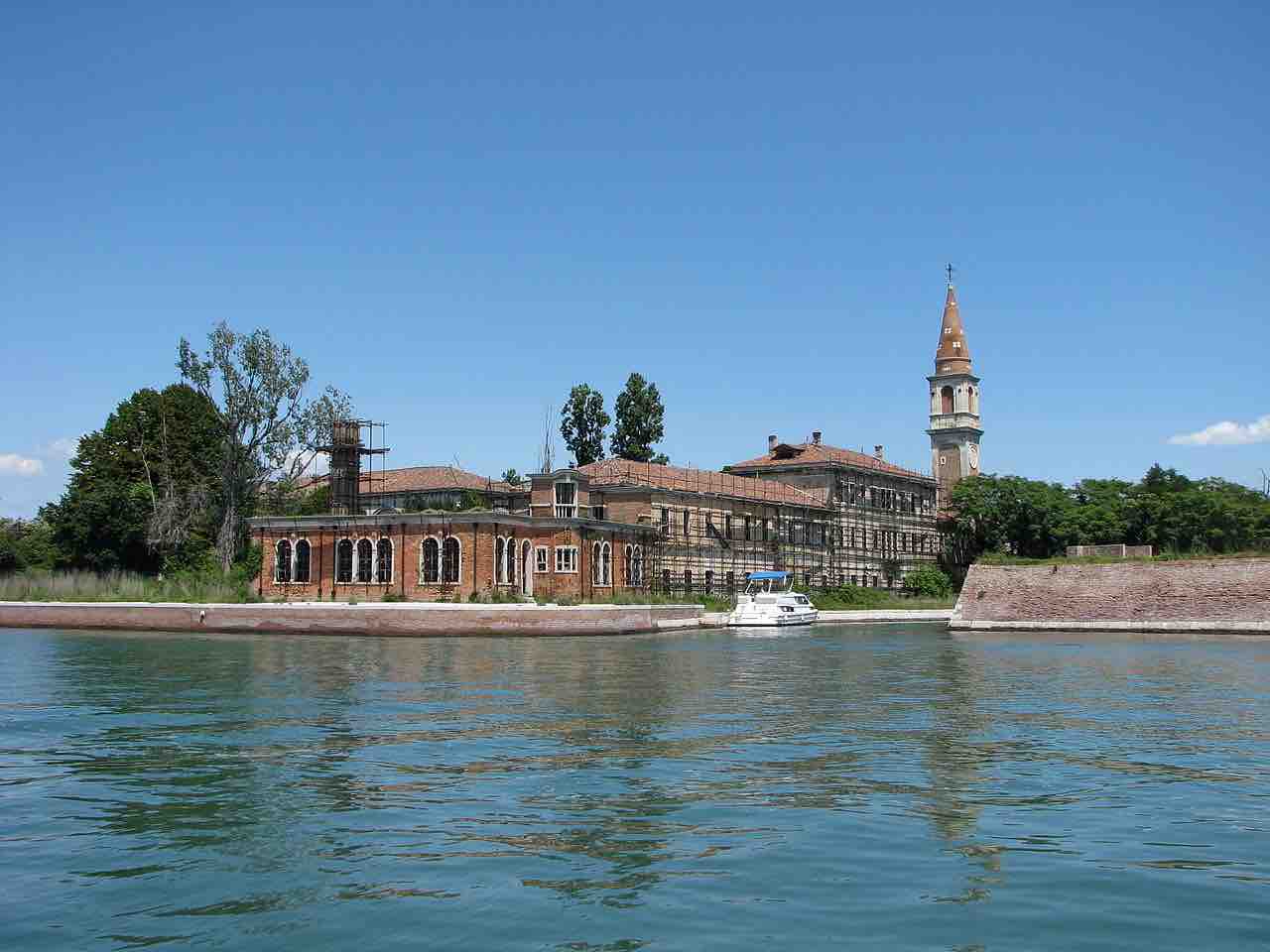
Poveglia, and it’s old hospital, pictured here, just maybe the spookiest island in Italy…
The Fontanelle Cemetery of Naples
When Naples started running out of room to bury its dead in the 16th century, undertakers started moving bones into a cave just beyond the city walls. The cemetery got its big boost in 1656, when plague swept Naples. Thousands of corpses were piled into the cave. Later, it became a boneyard for paupers, with a huge swell of corpses deposited during 1837’s cholera epidemic. Today, the remains of an estimated 40,000 people linger in the cave, although thousands more are thought to be buried beneath the surface.
In 1872, Father Gaetano Barbati decided it was time to clean up the cave. He and his followers organized and catalogued the bones. But here’s where it gets really creepy; they also inspired a cult of devotion to the dead. Volunteers weren’t just cleaning skulls. They also were praying to them and asking them for favors.
In 1969, the Archbishop of Naples closed the Fontanelle Cemetery down, worrying it had become a fetishist cult. The cave only reopened to the public full-time in 2010… and it remains filled with the bones and skulls of 40,000 nameless. Think you’re up for a visit? You can find the Fontanelle Cemetery at Via Fontanelle 80.
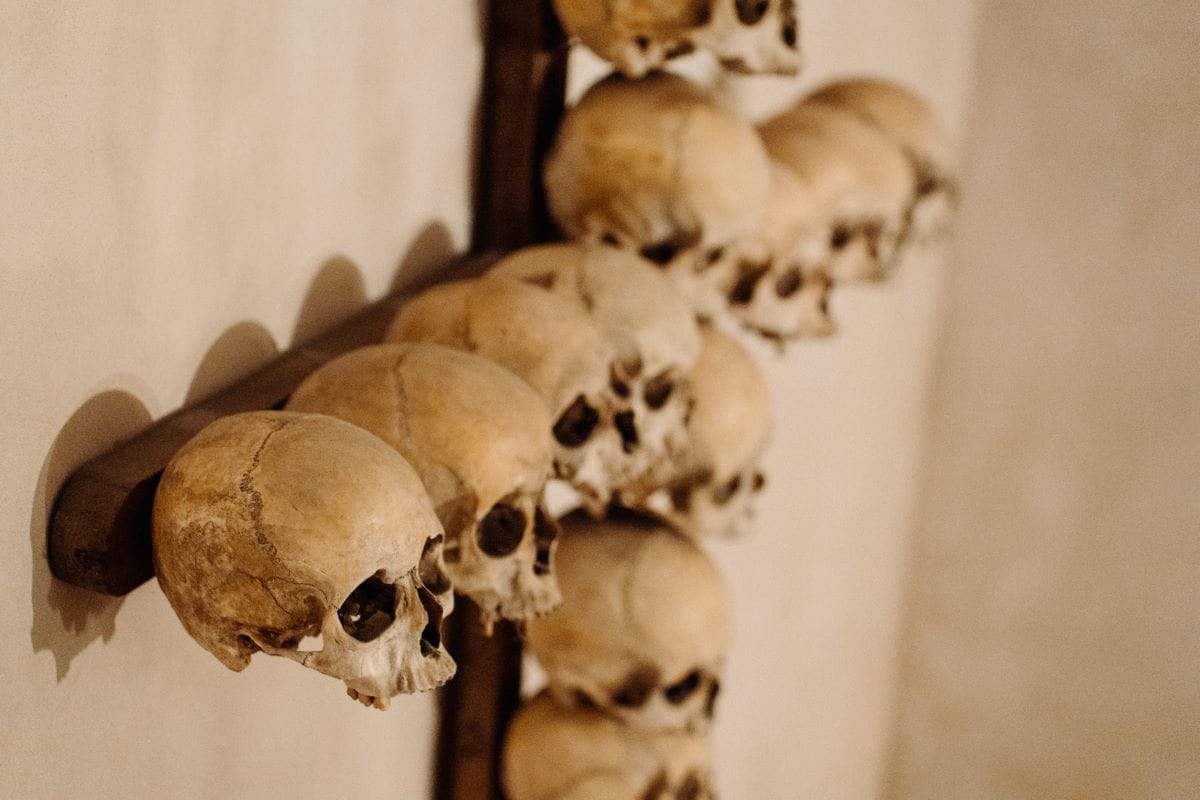
Some sections of the cemetery can be incredibly creepy.
FAQ – Haunted Places in Italy
What are the most haunted places in Italy?
Some of the creepiest haunted places in Italy include the Catacombs of St. Callixtus in Rome, Naples’ San Gaudioso Catacombs, the Capuchin Crypts in Rome and Palermo, Narni’s Inquisition torture chambers, Poveglia Island in Venice, and the Fontanelle Cemetery in Naples.
Can I explore Poveglia Island on my own?
No, Poveglia Island is off-limits to the public, and it is illegal to visit without special permission. However, some adventurous visitors may find local guides willing to take them to the nearby quarantine island of Lazzaretto Nuovo, which also offers a glimpse into the region’s eerie history.
What happened at the Inquisition torture chambers in Narni?
Beneath the 14th-century Santa Maria Maggiore church in Narni, visitors can explore rooms that once served as cells for the Inquisition. These dark, damp chambers were used for trials, torture, and imprisonment. One of the most eerie rooms is the “Room of Torments,” covered in disturbing symbols and prayers.
Ready to step inside Rome’s catacombs for an experience you’ll never forget? Join our Rome Catacombs and underground aqueducts tour to see these historic sites without the crowds. With transport between sites, we take the hassle out of your visit.
by Walks of Italy
View more by Walks ›Book a Tour

Pristine Sistine - The Chapel at its Best
€89
1794 reviews

Premium Colosseum Tour with Roman Forum Palatine Hill
€56
850 reviews

Pasta-Making Class: Cook, Dine Drink Wine with a Local Chef
€64
121 reviews

Crypts, Bones Catacombs: Underground Tour of Rome
€69
401 reviews

VIP Doge's Palace Secret Passages Tour
€79
18 reviews

Legendary Venice: St. Mark's Basilica, Terrace Doge's Palace
€69
286 reviews









